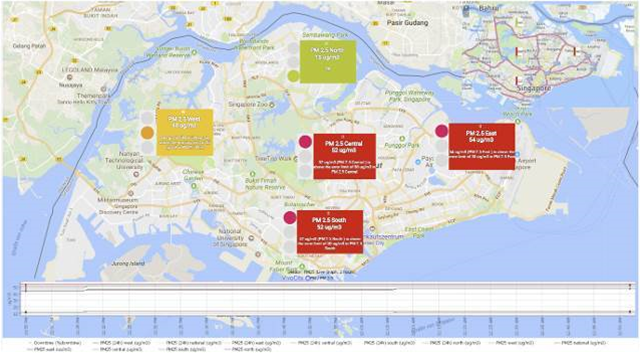Smart cities are entering a new phase due to the progress of IoT technologies. Smart devices, smart buildings and smart cities: the trend is clear that we will be analysing and monitoring large parts of our personal and community life in the future.
This is a lucrative business, as statistics from Roland Berger show. By 2023, the volume of the global market for smart city solutions is expected to be around $US28 billion. By 2017, it was $13 billion.
Let’s look at Singapore: Quiet, clean, green – that's what the city of the future looks like, not only in Europe but also in Asia, a continent with overcrowded cities and poor air quality.
Although Singapore is known to be a very clean, safe and well-organised city, many environmental indicators, including those measuring air pollution, have become alarming in recent years.
Some problems are specific to the region. The so-called “Haze” is formed by clouds of smoke from the Indonesian island of Sumatra. There, small farmers and plantation owners have begun slash-and-burn clearing of forests and fields. It is a yearly recurring ritual that often coincides with the onset of the dry season in the region.
But most are typical problems of a populous city and can easily be transferred to other locations around the world. Particulate matter, noise pollution, wind velocity, temperature, ozone, carbon monoxide, nitrogen dioxide, sulphur dioxide, road condition (humidity/temperature): Data on all these can be collected, stored and analysed to help redirect traffic in an environmentally friendly way, or to ensure greater safety at major events.
The availability of public parking spaces can be monitored and controlled; traffic jams and accidents can be avoided by intelligent traffic control.
In the long term, environmental data on air quality will provide politicians and municipal authorities with valuable data to launch environmental campaigns.
Future smart cities will look to do more with this data, and will come to realise that networks are the foundation of these interconnected devices. PRTG Network Monitor not only monitors the infrastructure, it stores, visualises and analyses data collected from sensors. Thresholds, anomalies and fault detection can be customised to warn city authorities of impending doom!
Take a look at how PRTG can visualise openly accessible environmental data in Singapore:

Downtime in a smart city doesn’t just impact the bottom line; it can impact citizens’ well-being and safety. If cities are becoming smart, monitoring has to be a part of it.







